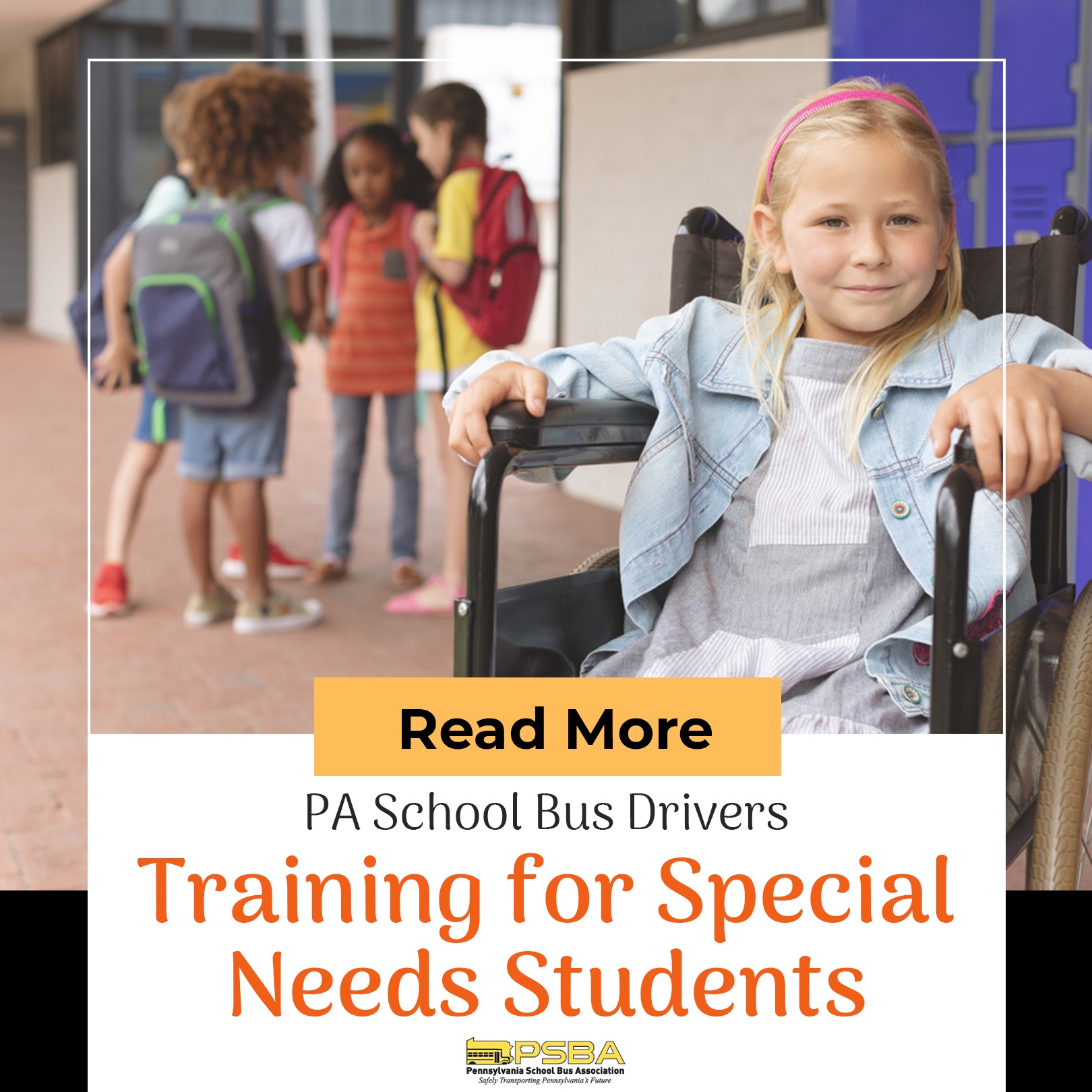Like many other professions, driving a school bus presents unique challenges. PA school bus drivers are responsible for the safety of the students on the bus and their conduct while they’re still on board.
Adding to these typical responsibilities is another one, this time pretty uncommon – transporting students with special needs or disabilities. Regional rules require that these students be transported only by bus drivers trained to perform the tasks.
And the required training is only fair. Transporting special needs students to and from school is difficult as it involves many tasks, activities, and requirements.
- Loading and unloading a special needs student using specific procedures
- Knowledge of operating special equipment
- Securing the student using the wheelchair
- Proper communication with the student and concerned individuals
- Adequate evacuation of the students in an emergency
- Knowledge of regional and state laws regarding transporting special needs students or students with disabilities.
The training is essential for every school bus driver and attendant who transport special needs students to perform their tasks with utmost safety and care to and from school.
Direct input from the transportation staff is essential to provide the safest and most efficient delivery services, especially to special needs students.
The following are tips for school bus drivers and attendants transporting students with special needs or disabilities.
- Start by researching on the Web. On Google or another search engine, search for “transporting students with disabilities.” It will lead to several lists of websites and web pages that can help provide direction.
- Every US state has published its training manuals online (usually PDF). Pennsylvania’s Department of Transportation (PennDOT) offers a comprehensive training manual, including a section that deals with transporting special needs students. Use this training manual as a starting point for your training and design a program that fits your needs.
- Another helpful resource for an effective training program for transporting special needs students is the NCST specifications and procedures manual, which can be downloaded from www.ncstonline.org.
- Start with the basics of federal and state laws governing the transportation of special needs students and your district’s policies and procedures. The basic information helps the drivers and attendants understand why it is necessary to do what they do.
- Identifying the characteristics of the various disabilities is also helpful for bus drivers and attendants.
- Manufacturers of equipment training, wheelchair lifts, and wheelchair securement for school buses will train the bus drivers and attendants on various aspects, such as loading the wheelchair onto the bus and securing it.
- The National Highway Traffic Safety Administration (NHTSA) has published training manuals to define the child restraint system used in school buses. These training manuals are also helpful for school bus drivers and attendants so that they will become familiar with them during their training sessions.
- Your special education department is likely to have sources that teach drivers and attendants to manage the behavior of special-needs students during bus rides.
- Involve your local fire department in conducting mock emergency evacuation drills. These drills would educate them on how a student’s disability might impact how they would be evacuated.
- School bus drivers and attendants must remember that specific information about special needs students should be kept confidential. They must be aware of the student’s medical needs, if any, and should be subject to sensitivity training to understand their condition best.
- All areas of training should be documented when provided and kept in the driver’s and attendant’s files.
- The drivers and attendants must be alert to updates regarding the latest procedure and best practices and incorporate new information and ideas.
- Bus drivers and attendees must also be prepared for unforeseen circumstances. For example, they should be aware of the student’s medical emergencies. They must know to pull over, call 911, remain calm, and stay with the student until professional medical help arrives. Drivers and attendants will also be trained to lend emotional support to the student and document the incident correctly.
- Seek additional helpful information regarding special-needs transportation from anyone else, such as school transportation veterans, new school bus drivers, special-needs transportation community, etc. They will be more than willing to share their knowledge.
You can learn more by reding “Transporting Students with Special Needs”. It will help you understand why well-trained PA school bus drivers and attendants are important for providing the safest and most secure transportation for special needs students on the school bus.

